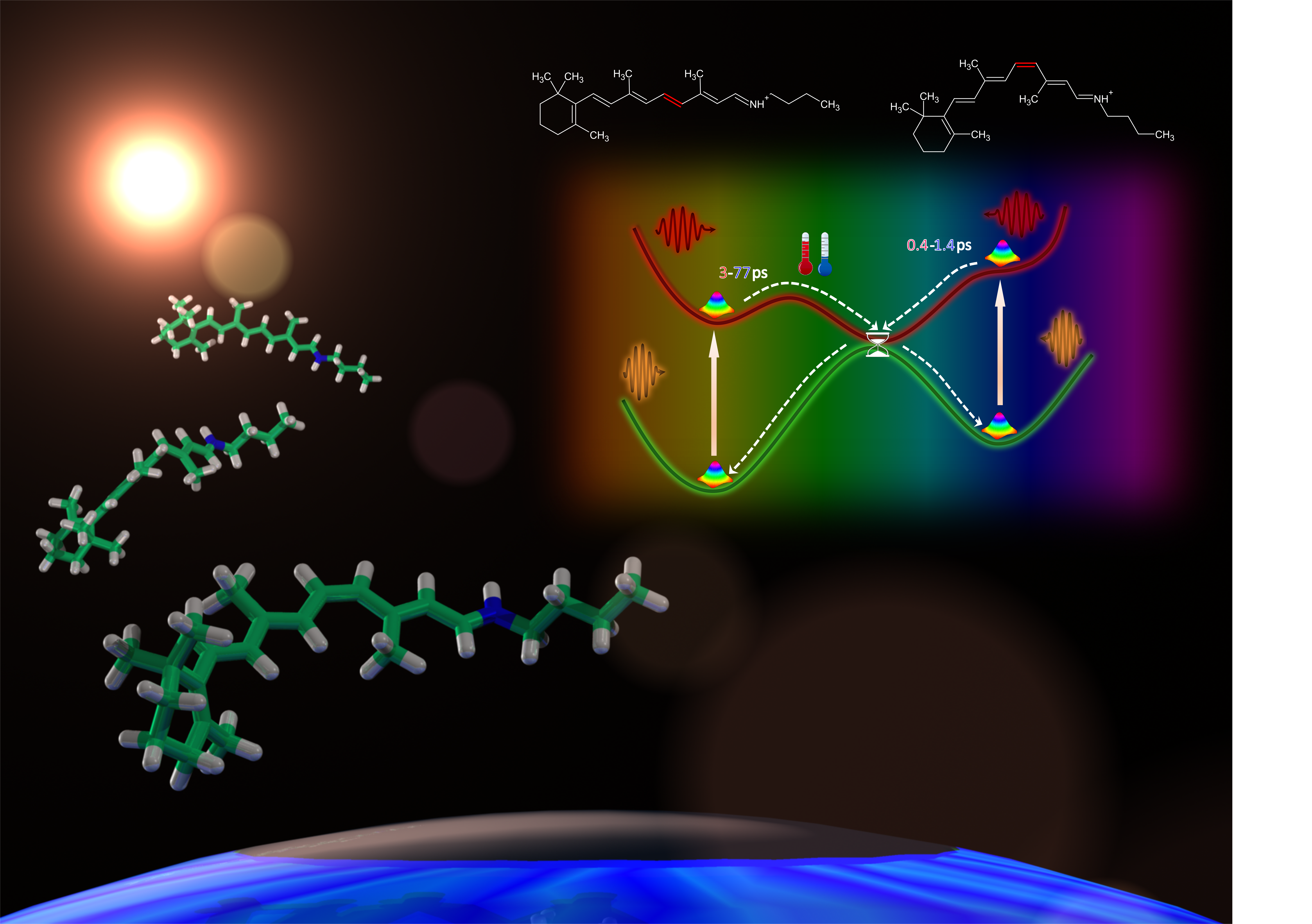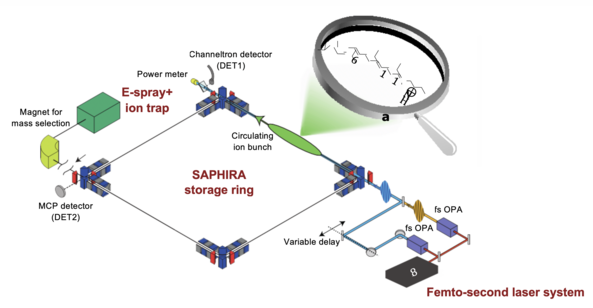Less than the Blink of an Eye
The first steps in the process of vision are incredbly fast. A physics group from AU have now solved a decades old riddle of the retinal molecule in a recent paper in Nature Communications of 14 March 2019.

The retinal molecule is a part of the protein rhodopsin, governing the mechanics of vision. For decades the researchers have known that the retinal molecule reacts incredibly fast (500-15s) to quanta of light hitting the retina of the eye.
The response time for the molecule in solutions is in comparison 10 times slower, and this difference has been unexplained up to now. Researchers from AU have now shown that this comparison is irrelevant, and the right way to compare is with the molecule in a vacuum. The fast response time is due to inner molecular properties of retinal; properties that have now been mapped for the first time using advanced laser technology together with storage ring facilities at the Department of Physics and Astronomy, AU.

Experimental setup for the retinal measurements at the SAPHIRA storage ring. Illustration: Nature Comm
The new results are published in a paper titled "Intrinsic photoisomerization dynamics of protonated Schiff-base retinal" by Hjalte V. Kiefer, Elisabeth Gruber, Jeppe Langeland and Lars H. Andersen of IFA in collaboration with Pavel A. Kusochek og Anastasia V. Bochenkova, Lomonosov University, Moscow.
This project is part of a ’Villum Experiment’, sponsored by the Villum Fonden.
